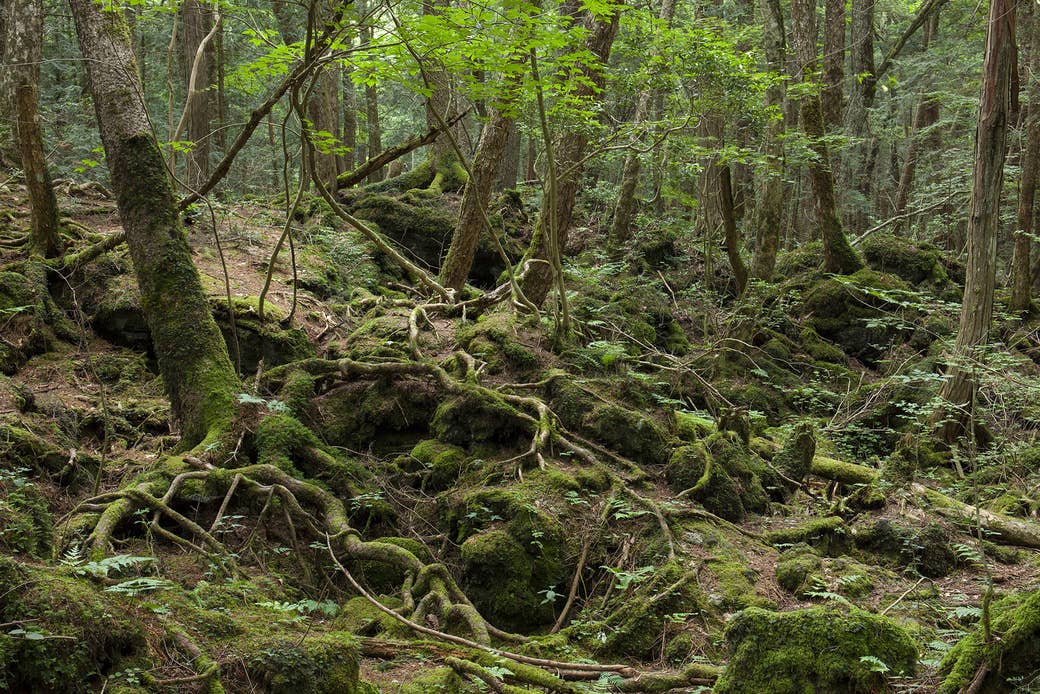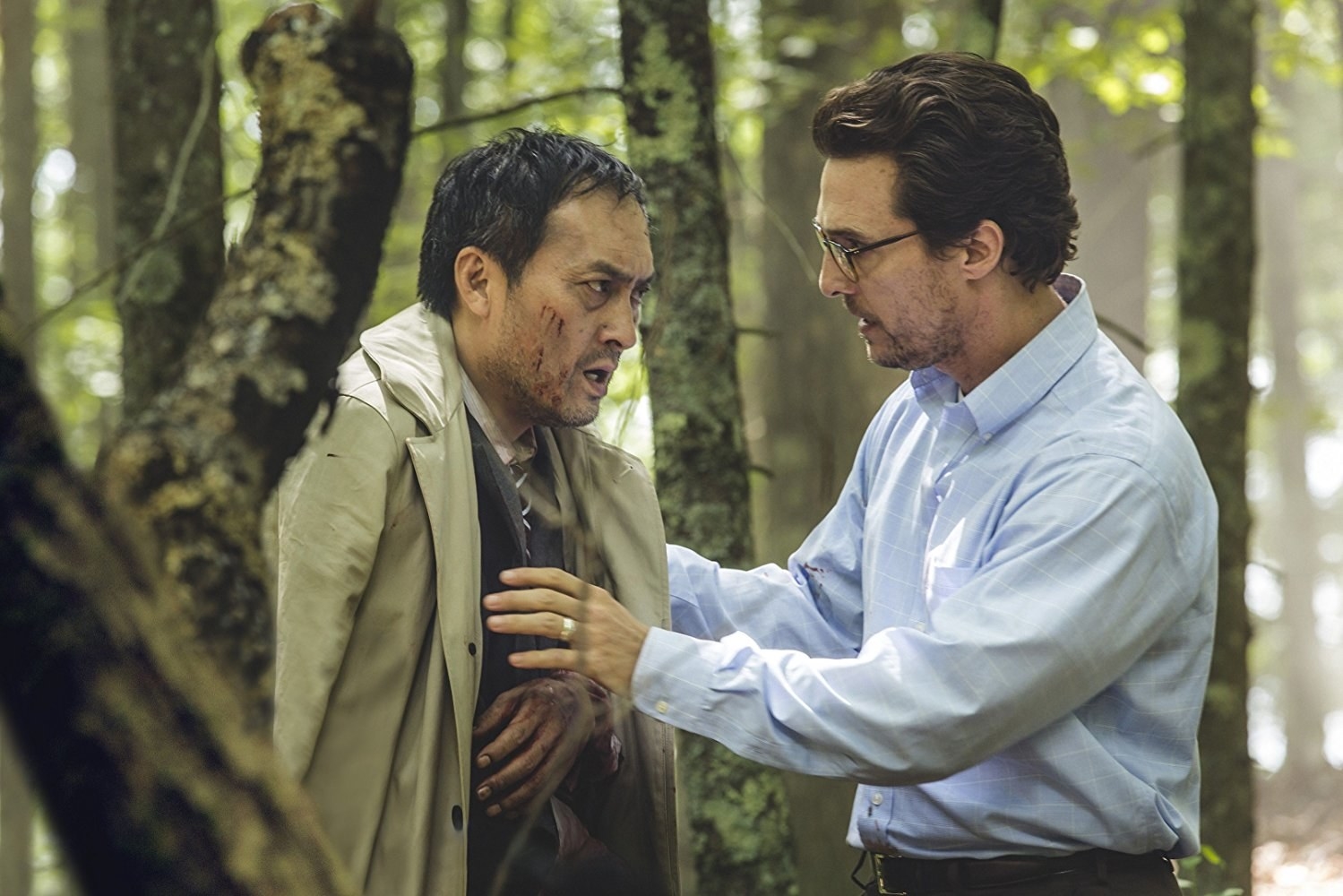
On Dec. 31, 22-year-old YouTube vlogging sensation Logan Paul rang in the new year by posting a 15-minute video from his trek into Japan’s Aokigahara forest (also known as Jukai, or “Sea of Trees.”) In the video, Paul and friends took the opportunity to have a few laughs at the expense of a suicide victim.
Bodies are not a rare sight in Aokigahara, colloquially known as “the suicide forest.” In 2010, police reported that over 200 people attempted suicide within the dense web of Aokigahara’s greenery (popularized as a site for suicide in Seichō Matsumoto’s 1960 novel Tower of Waves, and later described in Wataru Tsurumi’s 1993 Complete Manual of Suicide as the “perfect place to die”), with 54 completing the act. A cursory search of the forest on Google shows the morbidly curious hundreds of photos of people who killed themselves there — most commonly by hanging or overdose — along with photos of discarded belongings, tokens left by grieving loved ones, and vacant nooses, their ropes tatty and rotting.
An immense sadness permeates the woods, whose trees are often marked with colored tape or string to help guide those who decide to depart the forest without harming themselves. Still, its macabre reputation has turned the forest into something of a tourist attraction, the sort of location that’s included with San Jose’s Winchester Mystery House or Mexico’s Isla de las Muñecas on sensationalist lists of the “creepiest” or “most haunted” places in the world. In short, Aokigahara contains, within its legacy, the perfect raw materials for spectacular exploitation of the most opportunistic, vampiric variety. For those wandering the world like beachgoers with metal detectors, looking for thrills irrespective of empathy, the Sea of Trees is a veritable, miserable treasure trove.

Paul was roundly criticized for his stunt, almost immediately after the video of his hike was posted. He quickly released a written apology on Jan. 1, where he explained that the purpose of the video was meant to raise awareness about suicide, not simply to accrue views for his channel. When people remained unconvinced by Paul’s show of “contrition,” the vlogger released a second apology, this time in the form of a video posted to his YouTube channel the next day. Explaining that the discovery of the body in Aokigahara was “obviously unplanned” (despite the fact that the inclusion of the corpse in the final, edited video was clearly a deliberate decision), a teary-eyed Paul assures viewers that he doesn’t expect to be forgiven.
Still, Paul is perhaps the least interesting component of this entire debacle. Instead, cultural critics have asked bigger questions. What does this incident tell us about how we view suicide? What does the fact that Paul’s video was skyrocketed to YouTube’s front page while queer creators often have their content hidden due to “inappropriate material” tell us about YouTube’s failure to self-police?
Less prominent in the discourse surrounding Paul’s stunt is an examination of what it means that Paul did what he did in Aokigahara, or to watch white feet tread on sacred ground to mock the remains of a Japanese man. It is not insignificant that the body wasn’t white.
In order to explore this question, it’s helpful to understand Aokigahara in the Western imagination and what tourism of the forest — in reality, in language, and in media — represents.
Within the last three years, two disparate US movies have used Aokigahara as their setting: Gus Van Sant’s The Sea of Trees (2015) and Jason Zada’s The Forest (2016). Despite being vastly different (the former is a weepy drama, the latter a generic horror film), the two films share a remarkable amount of DNA, especially in their use of the Sea of Trees. In Van Sant’s film, an American (played by Matthew McConaughey) ventures to Aokigahara to kill himself, encountering a Japanese man (played by Ken Watanabe) who hopes to do the same. In Zada’s, an American (played by Natalie Dormer) ventures to Aokigahara to try to find her twin sister, who she believes is alive but lost in the forest.

The use of white, Western protagonists in both stories is telling, turning the forest (and the tragedies with which it is associated) into a foreign entity, an Other that is necessarily apart from the experiences of McConaughey and Dormer. In Sea of Trees, Van Sant underscores this, perhaps unintentionally, by revealing Watanabe’s character to be a figment of the forest, a sort of spirit manifested to help McConaughey see the value of life. Rather than allow the audience to empathize with the pain of a major nonwhite character, the film reduces Watanabe into a mystical Orientalized specter, literally denying Watanabe humanity.
The Forest, meanwhile, heightens the superstitions surrounding Aokigahara, turning the woods into an exotic haunted house, morphing the realities of mental illness and suicide into a Blair Witch surrogate. From the beginning of the picture, Japan is portrayed as alien and sinister, with strange foods, odd belief systems, and off-putting locals, one of whom goes so far as to fling himself at the window of Dormer’s taxi, simply for the chance to scare her. Aokigahara is a place from which Dormer must rescue her fellow white person, not because the forest represents the struggles of depression or anxiety, but because it represents a sort of non-Western madness, a malevolent web of superstition and evil long since extinguished in the American mind. When Dormer tries to tell whether a body she finds is that of her sister, she gazes on a corpse that is twisted, soggy, and rotted, as though it had just come from the set of Pirates of the Caribbean. The personhood of the victim is reduced to something grotesque: tragedy repackaged as monstrosity.
From these examples alone, it might be easy to say that these issues of representation are a result not of anything racial, but simply of the broadly problematic way in which suicide is discussed in the US. And it’s certainly true that the stigma surrounding suicide is worthy of major discussion. The fact that prominent figures like Gene Simmons or Henry Rollins feel comfortable labeling those who opt to end their own lives as cowards or quitters is testament enough to that. However, to link the way in which suicide and mental illness in nonwhite cultures is trivialized to the stigma around mental illness generally while ignoring the racialized implications of the discussion as a whole is, at the very best, irresponsible.
In terms of total number of suicides, Aokigahara actually ranks behind the Golden Gate Bridge as a site for suicides. There have been 1,500 deaths in 80 years at the bridge, dwarfing the estimated 500 deaths since the 1950s in Aokigahara. Still, if you were to approach most Americans and ask if they had heard of “the suicide bridge,” you would probably receive several puzzled looks. And it’s rare to hear of tourists visiting the Golden Gate Bridge because of its reputation as a location where hundreds have taken their own lives.
Despite this, Aokigahara retains its title and its reputation in the Western imagination: not necessarily of tragedy, but of allure. When discussing the forest, many still feel comfortable referring to the many who — burdened by depression, loss, and unbearable agony — have walked in and never walked out, as though they were a bit of trivia, as though their deaths mean nothing in and of themselves, but rather exist to add touristic spice to the base of Mount Fuji.
In fact, Aokigahara’s designation as the suicide forest is, historically, not a Japanese one. Its reputation as a fun place to visit if you want some creepy stories or unorthodox video opportunities is, certainly, not a local idea. The woods are full of signs urging those considering suicide to change their minds — assuring them that they are loved and that they have much to aspire to. Local lore also suggests that those who enter might fall prey to the yurei (an often malevolent ghost-like spirit) of others who have died there (legends that are partially based on rumors that the forest was once used for the practice of ubasute, a custom in which families would leave elderly or infirm relatives to die of starvation or exposure, as a sort of euthanasia).
Aokigahara retains its title and its reputation in the Western imagination: not necessarily of tragedy, but of allure.
The Sea of Trees is neither a thrill nor curiosity to those know it best. It is only in the eyes of tourists that the loss contained within the forest can be taken lightly, treated as some obligatory Orientalist flavor, like the suicide of a disgraced samurai, duty-bound to take his own life. The ugly dispassion that allows Aokigahara to become an attraction for Western visitors, that allows a white man to stride confidently into the forest and film what he finds there, speaks to something much larger, of which the forest is simply one example, and Logan Paul is merely one agent.
Inherent to the discussion of what Logan Paul did by turning the body of a nonwhite suicide victim into a prop and a spectacle to boost his profile is the plain truth that, despite the growing cultural awareness of the struggles of people with mental illness, the little compassion afforded them is often denied to people of color. Whereas we might publicly sympathize with famous white men who have depression or abuse drugs and alcohol, Azealia Banks, who has talked publicly about her mental health issues remains an object of mockery in the white cultural imagination. And the body that Logan Paul broadcast to millions will remain a nameless and faceless representative of an epidemic that many only ever partially care about. The white imagination often either spectacularizes or erases mental illness among people of color, robbing the sufferer of a voice, or relegating them to a site of monstrousness.
Narratives of mental illness or addiction and the tragedies and redemptions that can grow from them are still dominated by white faces and white voices, voyeuristically treating non-Western suicide as a cultural quirk to be exploited or flattened. Japan has the second highest suicide rate of any developed nation (roughly 70 per day in 2015). Linking many of these suicides to social shame, financial stress, and isolation, experts have worked tirelessly to provide depth to the narrative of suicide in Japan, along with its unique cultural underpinnings. Still, Japan is only afforded two ideas of this struggle in the Western imagination: the honor-bound warrior disemboweling himself, or the lone businessman wandering into the woods to die. Both are suffocating, and dehumanizing, powered by the gelid brutality of exotification. Both privilege spectacle over compassion and demonstrate a failure of empathy.
It’s impossible to effectively discuss Logan Paul and Aokigahara without talking about the racialized exploitation and erasure of mental illness and suicide. To attempt to do so is to participate in that horrid video’s abject work.●
